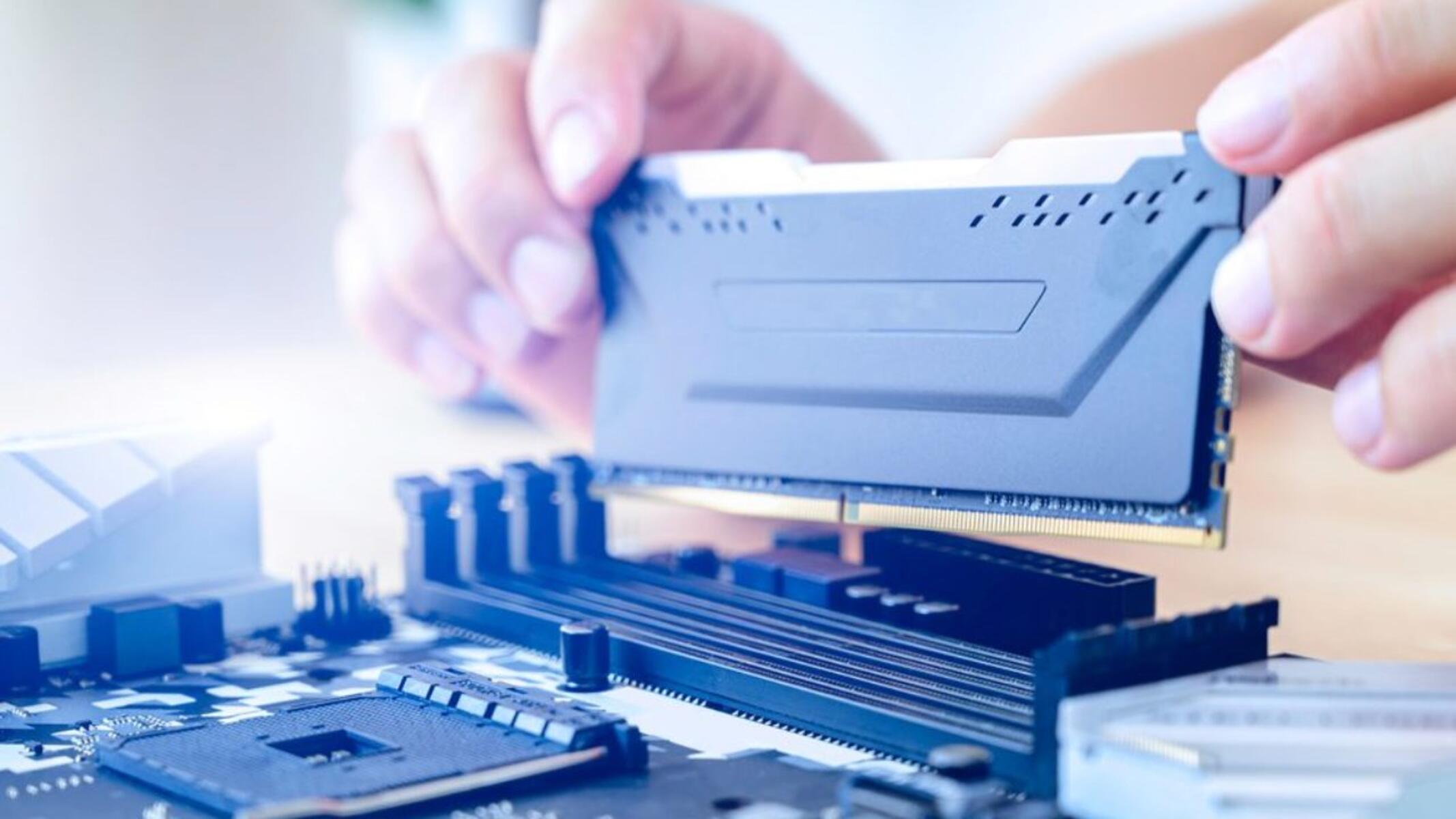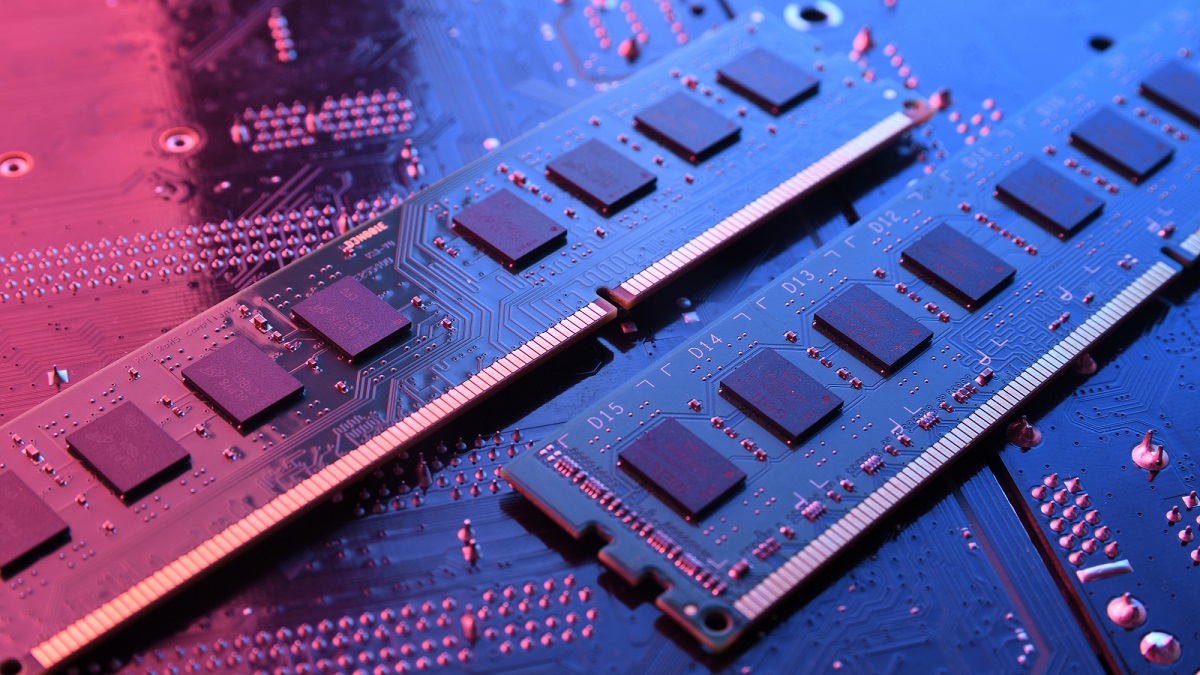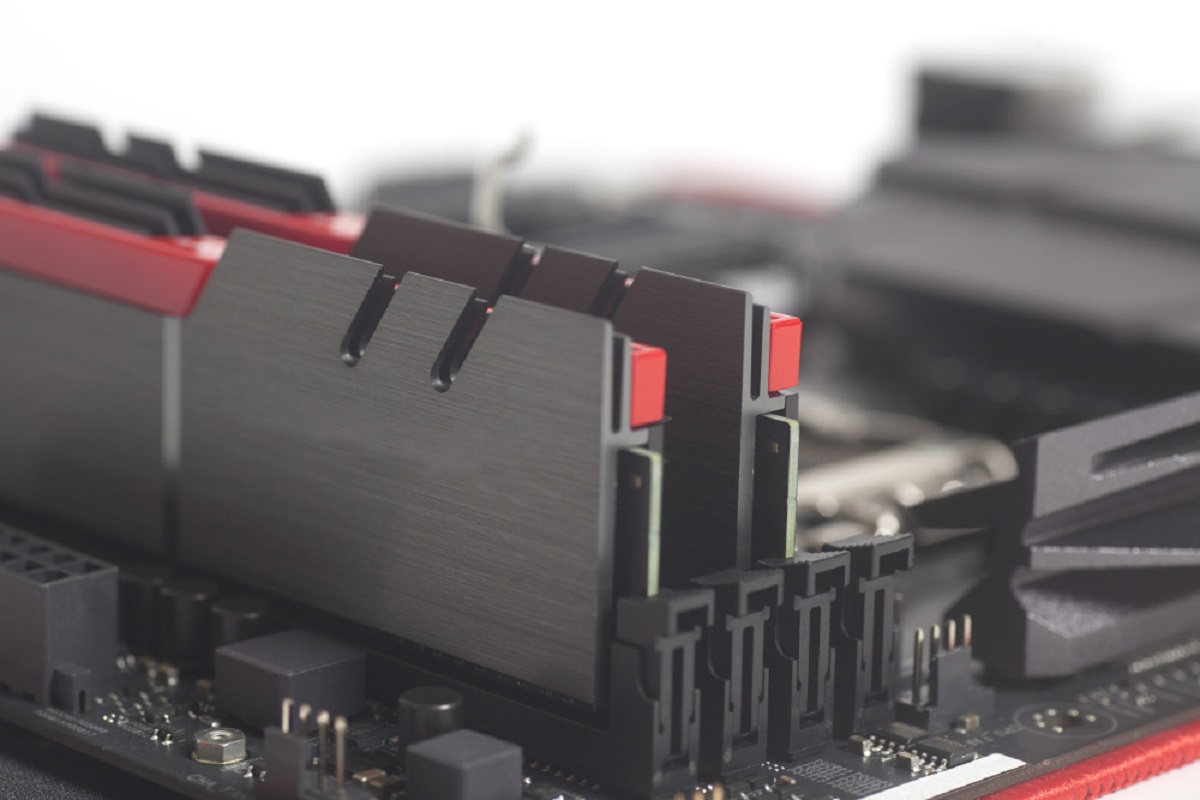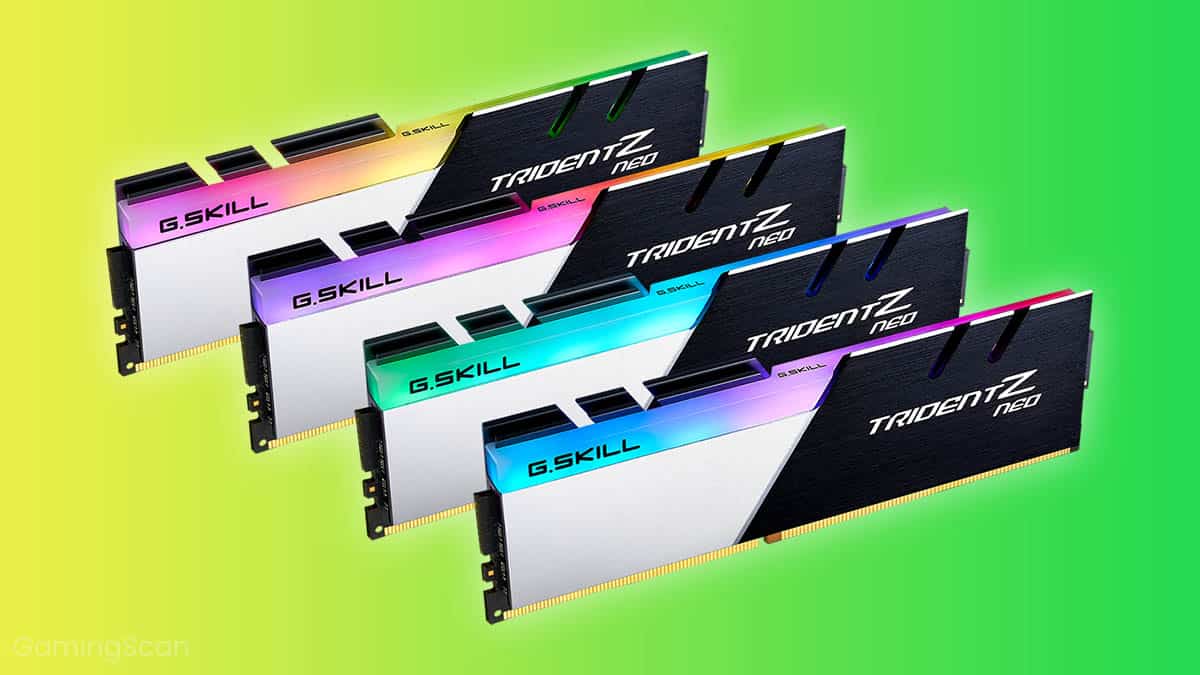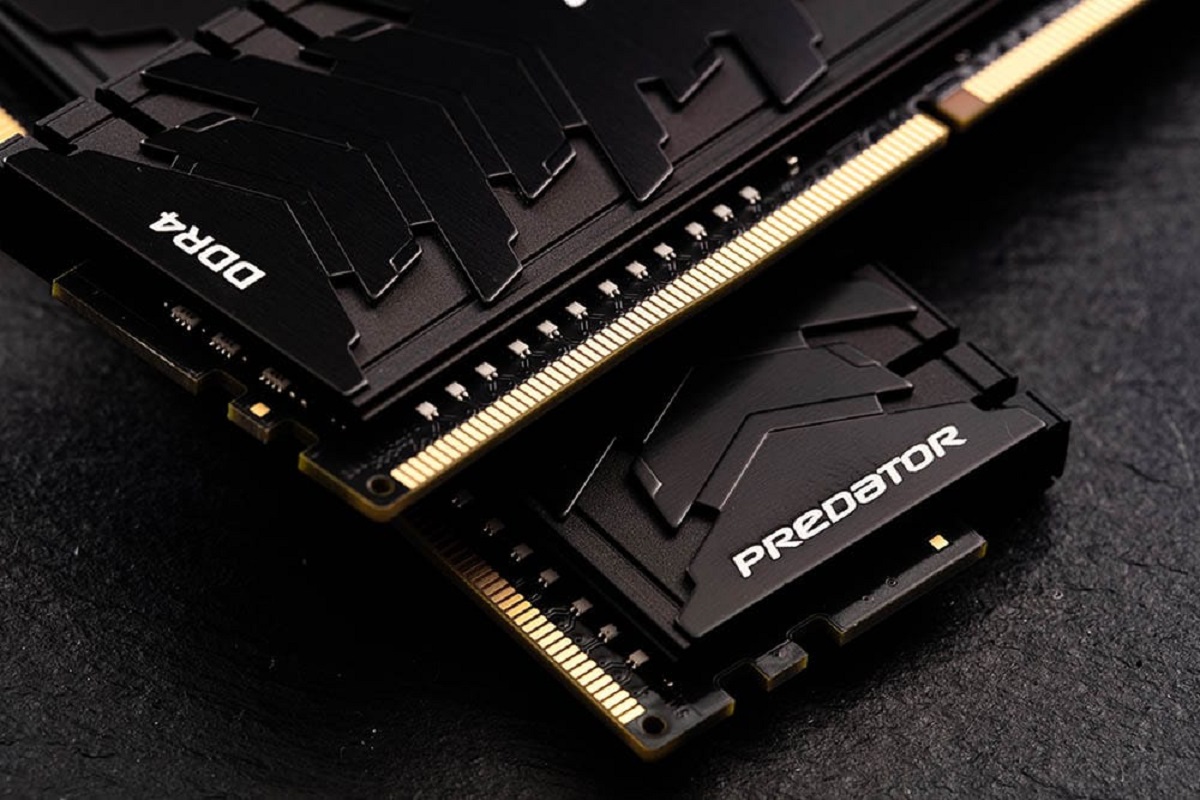Introduction
Have you ever wondered how much RAM is enough for your computer? If you’re looking to upgrade your computer’s performance, understanding the role of RAM is crucial. RAM, or Random Access Memory, plays a significant role in the overall speed and efficiency of your computer system. In this article, we’ll delve into the world of RAM and specifically explore the impact and benefits of having 16GB of RAM in your system.
RAM is a type of computer memory that allows data to be stored and accessed quickly. Unlike permanent storage devices like hard drives or solid-state drives, RAM is a volatile memory that can be read from and written to by the CPU. It serves as a temporary workspace for your computer to handle data and instructions while you’re using various applications and programs.
The amount of RAM in your computer can greatly influence its performance. The more RAM you have, the more data your computer can store and access quickly, resulting in faster program execution, smoother multitasking, and better overall system responsiveness.
Now, let’s focus on the specific RAM capacity of 16GB. 16GB is considered a respectable amount of RAM and is commonly found in many mid-range to high-end computers. It offers a good balance between affordability and performance, making it suitable for a wide range of users, including gamers, content creators, and professionals who work with resource-intensive applications.
However, it’s essential to determine if 16GB of RAM is enough for your specific needs. While it may be adequate for most users and computing tasks, it’s crucial to consider factors such as the type of applications you use, the size of your files, and your multitasking habits. Let’s explore the benefits of having 16GB of RAM and when you might need to consider upgrading to a higher capacity.
What is RAM?
Before diving into the specifics of RAM capacity, let’s first understand what RAM is and how it works. RAM, which stands for Random Access Memory, is a type of computer memory that stores information that the CPU (Central Processing Unit) needs to access quickly. It is a temporary storage space that holds data and instructions while your computer is running.
Think of RAM as a desk space where you can place your work-in-progress documents, tools, and resources. Just like having a larger desk allows you to work on multiple tasks simultaneously, having more RAM enables your computer to handle more data and applications at the same time.
When you open a program or launch an application, the computer transfers the necessary data from the storage drive to RAM for faster access. This process, known as loading or caching, allows the CPU to access the data it needs without having to retrieve it from the slower storage devices like hard drives or solid-state drives.
RAM is measured in gigabytes (GB), and it comes in different types such as DDR3, DDR4, and DDR5. The type of RAM your computer uses depends on the motherboard and CPU compatibility.
One important characteristic of RAM is its speed, often referred to as the RAM’s frequency. RAM speed is measured in megahertz (MHz) and affects how quickly the CPU can read and write data to and from the RAM. Higher RAM speeds generally result in better system performance, although the overall impact may vary depending on the specific tasks and applications you use.
In summary, RAM is a critical component of your computer system that provides the necessary memory for executing programs and storing temporary data. It plays a significant role in determining your computer’s speed, multitasking capabilities, and overall responsiveness. Understanding how RAM works is essential in making informed decisions about the amount of RAM you need for your specific computing needs.
How does RAM affect your computer’s performance?
RAM, or Random Access Memory, has a direct impact on your computer’s performance. It plays a crucial role in determining how quickly and efficiently your system can perform tasks and handle various applications. Here are some ways in which RAM affects your computer’s overall performance:
- Faster program execution: When you open a program or launch an application, it needs to be loaded into RAM. The more RAM you have, the more programs and applications you can load into memory simultaneously. This results in faster program execution with minimal delay or lag.
- Improved multitasking capabilities: Multitasking involves running multiple applications simultaneously. With an adequate amount of RAM, you can switch between applications seamlessly and smoothly. The CPU can quickly access the necessary data from RAM, improving multitasking performance and minimizing the risk of slowdowns or crashes.
- Enhanced system responsiveness: RAM acts as a temporary storage space for frequently accessed data and instructions. By having more RAM, your computer can keep more data readily available, allowing for faster retrieval and execution. This results in a more responsive system, reducing delays when performing tasks such as opening files, browsing the web, or running resource-intensive applications.
- Better gaming performance: Gamers often require a significant amount of RAM to ensure smooth gameplay and optimal graphics performance. With more RAM, the computer can store and load game assets, textures, and other essential data more efficiently, minimizing performance bottlenecks and providing a seamless gaming experience.
- Ease of working with large files: If you frequently work with large files, such as high-resolution images, videos, or complex design files, having ample RAM becomes essential. More RAM allows your computer to store and process these files without slowdowns, enabling quicker editing, rendering, and data manipulation.
In summary, RAM has a significant impact on your computer’s performance by ensuring faster program execution, improved multitasking capabilities, enhanced system responsiveness, better gaming performance, and ease of working with large files. It’s important to have enough RAM to meet your specific computing needs and ensure a smooth and efficient user experience.
Understanding RAM capacity
RAM capacity refers to the amount of memory available in your computer system. It determines how much data and applications your computer can work with simultaneously. Understanding the significance of RAM capacity is crucial in determining the optimal performance for your computing needs.
RAM capacity is typically measured in gigabytes (GB). The higher the capacity, the more data your computer can store and access quickly. RAM capacity is an important factor in multitasking, as it determines how many applications you can run simultaneously without experiencing performance issues.
The amount of RAM you need depends on various factors, such as the type of tasks you perform, the applications you use, and the size of your files. For basic tasks like web browsing, document editing, and email, 4GB to 8GB of RAM is usually sufficient. It allows these applications to run smoothly without any major slowdowns or delays.
However, if you engage in more resource-intensive activities such as gaming, video editing, 3D modeling, or running virtual machines, you’ll need more RAM. For these tasks, a minimum of 16GB of RAM is recommended. With 16GB, you can have multiple applications and processes running simultaneously without experiencing significant performance bottlenecks.
It’s worth noting that there is a point of diminishing returns when it comes to RAM capacity. While having more RAM can provide benefits, such as smoother multitasking and faster data access, there comes a point where the additional RAM may not result in noticeable performance improvements.
Additionally, the maximum RAM capacity supported by your computer is determined by your motherboard’s limitations. It’s essential to check the specifications of your motherboard to ensure compatibility with higher RAM capacities.
In summary, understanding RAM capacity is crucial in determining the optimal performance of your computer system. It depends on factors such as the type of tasks you perform and the size of your files. While 4GB to 8GB of RAM is sufficient for basic tasks, resource-intensive activities may require a minimum of 16GB. Keep in mind your computer’s limitations and ensure compatibility with higher RAM capacities for the best performance.
What does 16GB of RAM mean?
When we refer to 16GB of RAM, we are talking about the specific capacity of random access memory that a computer system possesses. RAM, or Random Access Memory, is a type of volatile memory used by computers to temporarily store data that the CPU (Central Processing Unit) needs to access quickly. Having 16GB of RAM means that your computer system has 16 gigabytes of memory available for data storage and retrieval.
But what does 16GB of RAM actually mean in practical terms? Well, 16GB is considered a moderate to high amount of RAM that can provide a significant performance boost in various computing tasks. It offers a good balance between affordability and performance, making it suitable for a wide range of users.
With 16GB of RAM, you can run multiple applications simultaneously without experiencing significant slow down or performance issues. This capacity allows you to handle resource-intensive tasks, such as video editing, 3D rendering, and running virtual machines, with relative ease.
In terms of gaming, 16GB of RAM is often recommended as a standard for modern gaming setups. It allows for smoother gameplay, faster loading times, and seamless multitasking between gaming and other applications.
Additionally, 16GB of RAM is beneficial for content creators who work with large files, such as high-resolution images, videos, or complex design projects. It provides ample memory for these applications to store and manipulate data, resulting in improved workflow efficiency and faster rendering times.
Furthermore, 16GB of RAM ensures better multitasking capabilities, allowing you to have multiple browser tabs open, run productivity software, and stream media simultaneously without experiencing significant performance slowdowns.
Overall, having 16GB of RAM in your computer system means that you have a respectable amount of memory that can handle a wide range of computing tasks efficiently. It provides the necessary capacity for multitasking, gaming, content creation, and resource-intensive applications, allowing for a smooth and responsive user experience.
Is 16GB of RAM enough?
When it comes to determining if 16GB of RAM is enough for your computer, several factors need to be considered. While 16GB is considered a decent amount of RAM and can handle many computing tasks effectively, it may or may not be sufficient depending on your specific needs and usage patterns.
For the average user who engages in basic tasks like web browsing, email, document editing, and multimedia consumption, 16GB of RAM is more than enough. It provides ample memory to run multiple applications simultaneously without experiencing significant performance issues.
Even for light gaming, 16GB of RAM is considered adequate. Most modern games can run smoothly with this amount of RAM, allowing for a seamless gaming experience and minimal lag. However, if you’re a hardcore gamer or are planning to play very demanding games or run virtual reality (VR) applications, you may want to consider upgrading to 32GB or even higher for optimal performance.
For content creators, especially those working with video editing, 3D rendering, or complex design projects, 16GB of RAM can be sufficient. It allows for smooth editing and rendering of medium-sized files. However, if you regularly work with large files or use advanced software that requires substantial memory, upgrading to 32GB or more may be beneficial to ensure optimal performance and time efficiency.
Furthermore, if you tend to run multiple resource-intensive applications simultaneously, such as virtual machines, heavy multitasking, or running memory-hungry software, you may benefit from having more than 16GB of RAM. The additional memory capacity can prevent performance bottlenecks, reduce the likelihood of system slowdowns, and enhance overall productivity.
It’s also worth considering future-proofing your computer. As software applications and operating systems evolve, their memory requirements tend to increase. Having 16GB of RAM now may be sufficient, but considering the longevity of your system and potential future needs, upgrading to a higher RAM capacity could be a wise investment.
In summary, whether 16GB of RAM is enough for your computer depends on your specific usage, multitasking habits, and the types of applications you run. For most average users and moderate computing tasks, 16GB is sufficient. However, if you engage in heavy multitasking, demanding gaming, content creation, or work with large files, upgrading to a higher RAM capacity may provide a more optimal and efficient experience.
Benefits of having 16GB of RAM
Having 16GB of RAM in your computer system offers several benefits that contribute to a smoother and more efficient user experience. Let’s explore some of the advantages of having this specific RAM capacity:
- Improved multitasking: With 16GB of RAM, you can run multiple applications simultaneously without experiencing significant slowdowns. Switching between different tasks becomes seamless, allowing you to work more efficiently and boost productivity.
- Enhanced gaming performance: Many modern games require a substantial amount of RAM to run smoothly. With 16GB, you have enough memory to handle demanding games, resulting in faster loading times, smoother gameplay, and improved overall gaming performance.
- Efficient content creation: Content creators, such as video editors, graphic designers, and 3D artists, can benefit greatly from 16GB of RAM. It provides the necessary memory to handle large project files and resource-intensive software, resulting in faster rendering times and smoother editing workflows.
- Seamless multimedia experience: Whether you’re streaming high-definition videos, editing photos, or listening to music, 16GB of RAM ensures a seamless multimedia experience. It allows your computer system to handle multimedia tasks smoothly, without buffering, stuttering, or slowdowns.
- Faster data access: More RAM means that your computer can cache frequently accessed data and instructions, resulting in faster data retrieval and execution. This translates to quicker response times when opening applications, accessing files, and navigating through your computer system.
- Improved virtual machine performance: If you frequently work with virtual machines or run multiple operating systems simultaneously, 16GB of RAM is highly beneficial. It provides enough memory to allocate to virtual machines, ensuring smooth performance and minimizing the risk of slowdowns or crashes.
- Better future-proofing: 16GB of RAM is considered a respectable amount for current computing needs. By having this capacity, you are future-proofing your computer to some extent. It allows you to handle upcoming software, updates, and increased memory requirements without immediate need for an upgrade.
In summary, having 16GB of RAM offers a range of benefits, including improved multitasking capabilities, enhanced gaming performance, efficient content creation, seamless multimedia experiences, faster data access, improved virtual machine performance, and future-proofing. This amount of RAM provides a good balance between affordability and performance for most users and computing tasks.
When do you need more than 16GB of RAM?
While 16GB of RAM is generally sufficient for most users and computing tasks, there are certain scenarios where you may benefit from having more memory. Here are some situations where upgrading to a higher RAM capacity becomes advantageous:
- Resource-intensive applications: If you regularly use software that requires substantial memory, such as video editing software, 3D rendering programs, or virtualization software, you may need more than 16GB of RAM. These applications often work with large files and perform complex operations that benefit from having additional memory to ensure optimal performance.
- Professional content creation: Content creators who work with high-resolution images, extensive video projects, or complex design files may require more than 16GB of RAM. Having additional memory allows for smoother editing, rendering, and manipulation of large files, resulting in improved productivity and faster workflow.
- Heavy multitasking and virtualization: If you frequently run multiple resource-intensive applications simultaneously or use virtual machines, having more than 16GB of RAM becomes beneficial. It provides the necessary memory to allocate to each task, preventing performance slowdowns, reducing the risk of crashes, and ensuring smooth multitasking without compromising overall system responsiveness.
- Gaming beyond standard requirements: While 16GB of RAM is usually sufficient for gaming, enthusiasts who play highly demanding games or engage in streaming and content creation while gaming may benefit from more memory. The additional RAM allows for smoother gameplay, faster loading times, and seamless multitasking between gaming and other resource-intensive applications.
- Future-proofing: As technology advances and software becomes more demanding, having more than 16GB of RAM can help future-proof your system. If you plan to keep your computer for an extended period, upgrading to a higher RAM capacity ensures that you can handle upgrading software and operating systems without immediately needing to invest in more memory.
It’s important to assess your specific needs and usage patterns to determine if you require more than 16GB of RAM. Consider the types of applications you use, the size of your files, multitasking habits, and future plans for your computer. By evaluating these factors, you can make an informed decision on whether upgrading to a higher RAM capacity is necessary for optimal performance in your computing tasks.
Conclusion
RAM plays a crucial role in determining the performance and efficiency of your computer system. Having 16GB of RAM offers numerous benefits and is suitable for a wide range of users, from average computer users to gamers, content creators, and professionals handling resource-intensive applications. It allows for smooth multitasking, faster program execution, enhanced gaming performance, and seamless multimedia experiences.
However, the need for more than 16GB of RAM arises in certain scenarios. Users who engage in heavy multitasking, work with large files, use resource-intensive software, or plan to future-proof their systems may consider upgrading to a higher RAM capacity. Such instances include professional content creation, virtualization, and gaming beyond standard requirements.
When determining the right RAM capacity for your needs, consider factors such as the type of tasks you perform, the applications you use, and your multitasking habits. Additionally, it’s important to check your motherboard’s specifications for maximum RAM support. Striking the right balance between affordability and performance is essential when making the decision to upgrade your RAM.
In conclusion, having 16GB of RAM provides a solid foundation for most users and computing tasks, delivering optimal performance in a variety of scenarios. Nonetheless, carefully evaluating your specific needs and considering future requirements will guide you in determining whether more than 16GB of RAM is necessary to further enhance your computer’s capabilities.







